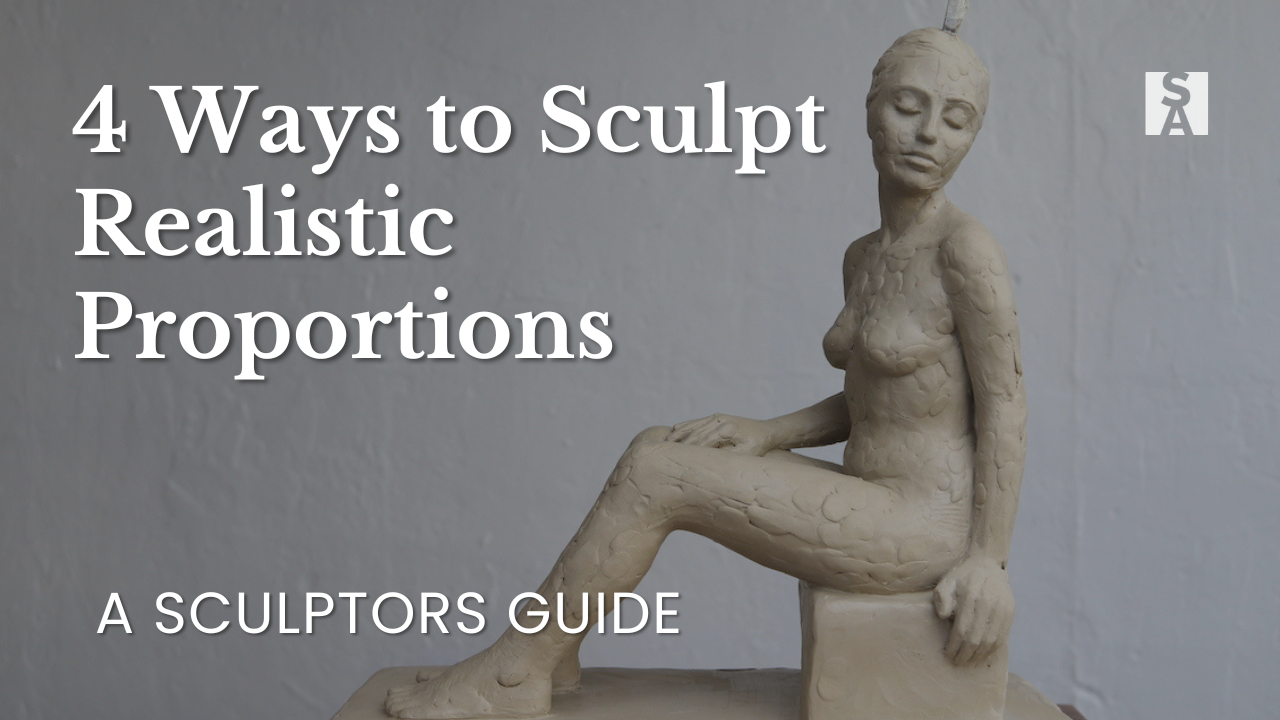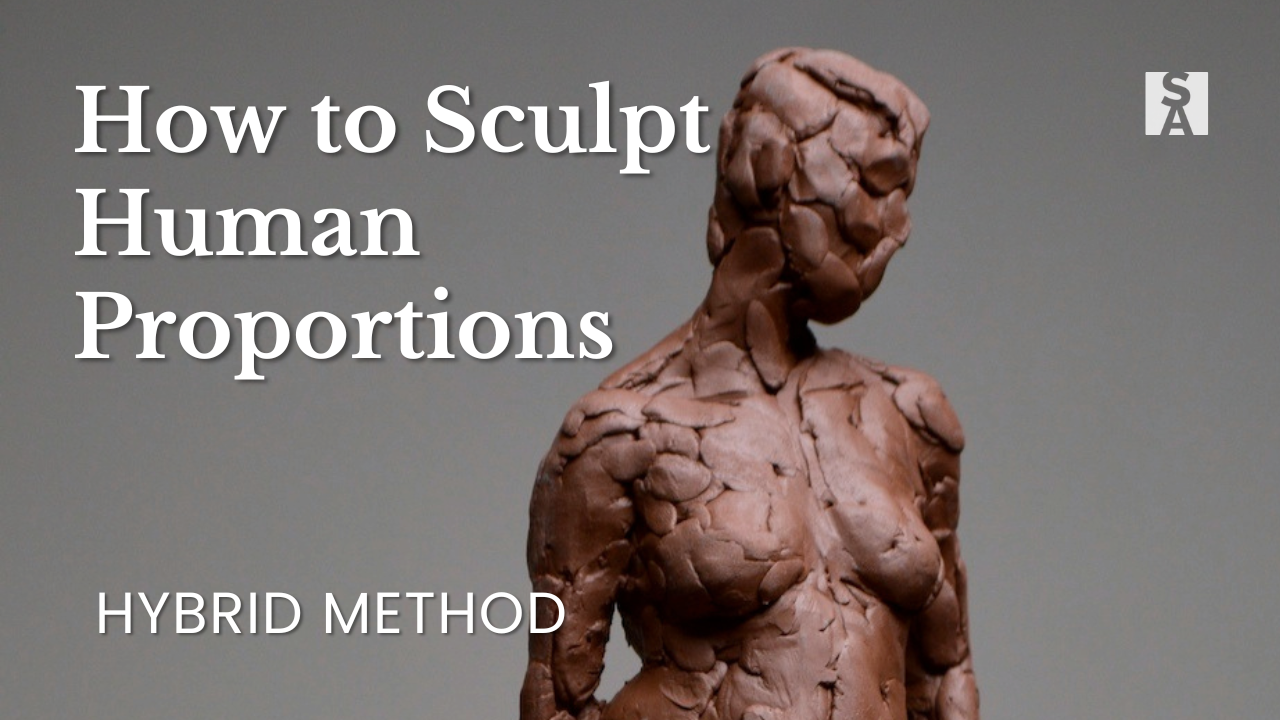How to Sculpt an Ear in Clay – A Classical Study

Table of Contents
- Why Sculpting the Ear Matters
- Watch: 2-Minute Ear Sculpting Timelapse
- Step-by-Step: Sculpting the Ear in 4 Stages
- Why Start with the Ear?
- Studying Michelangelo’s David
- Pro Tip: Quality of Your Reference Cast Matters
- What You’ll Learn from This Study
- Try This Study Inside the Atelier
Why Sculpting the Ear Matters
Most aspiring sculptors treat the ear like an afterthought. A necessary facial feature to include, but nothing to get too excited about.
But the truth is, learning to sculpt the ear in clay can open up a new dimension, especially for portrait sculpting.
Did you know that no two ears are the same? They are actually as unique as fingerprints - and this means that when you capture an individual ear, you elevate the personality of your entire portrait.

The ear isn’t just a shape stuck on the side of the head; it’s a sculptural form worth studying in its own right.
If you’ve searched how to sculpt an ear in clay, you might be looking for a few quick tips. But what you’ll find here is something more enduring: a deeper look at why the ear deserves your full attention as a sculptor.
In this post we will look at the ear using a historical reference: a classical study from Michelangelo’s David sculpture. It reveals the ear’s layered complexity: the curving planes, concave and convex forms, and its essential anatomical structure.
It’s a compact masterclass in form. And mastering it won’t just sharpen your clay technique - it will make your portraits stronger, more personal, and more alive.
Keep reading to discover why this classical ear study is so effective, and how it can help you build both skill and confidence in the earliest stages of your sculpting journey.
How to Sculpt the Ear: 2 minute Timelapse
Step-by-Step: Sculpting the Ear in 4 Stages
Now that you’ve seen the ear come to life, let’s break it down step by step so that you truly understand how the form is built. This is a glimpse into the structured approach we use inside my sculpting Atelier—breaking the ear into stages that train both hand and eye.
4 Key Stages of Sculpting the Ear in Clay – and What They Teach You

From a simple block-in to a finished classical form, these four images show the key phases of sculpting the ear in clay:
Stage 1: Block-In the Outer Shape
This first stage trains you to see the ear as a unified sculptural form rather than a collection of details.
Stage 2: Mapping the Inner Anatomy
Here, the complexity of the ear becomes an opportunity. You’ll start identifying key landmarks—like the helix, antihelix, and tragus—not just as names, but as 3D forms. This stage deepens your anatomical literacy and helps you organize the form before diving in.
Stage 3: Building the Forms
This is where volume starts to emerge. You’ll begin interpreting the inner shapes in three dimensions, applying your knowledge of convex and concave planes. This stage trains your eye to see beyond the surface.
Stage 4: Refining Transitions and Curves
The final pass is about sensitivity. You’ll develop your ability to create forms, refine edges, and bring the sculpture to life through subtle shifts in depth. It’s where your observation, anatomy, and technique come together.
Why Start with Sculpting the Ear?
The ear is often overlooked, but it’s deceptively sophisticated. The curves, folds, and undercuts teach you to see deeply and work three-dimensionally. It’s also a project with low pressure because there is no need to worry about facial likeness or expression. That freedom lets you focus on learning how to shape the forms with your tools, understanding the anatomy, and seeing form in a new way.
Most students are surprised by how satisfying it is. There’s a moment when things click, and they realize: I can actually sculpt this.
“This was a profound experience. I can confirm that I learned to SEE to a more acute degree. This was also a great introduction to hand sculpting clay. Using the recommended tools, I gradually became increasingly confident in their use.”
— Kenneth, Atelier Member
The shift from doubt to skill is part of what makes this study so foundational. You’re not just practicing a feature, you’re learning to see like a sculptor.
Why Michelangelo’s David Is the Best Reference for Sculpting the Ear

Michelangelo’s David isn’t just a historical masterpiece - it’s a sculptor’s training manual. The anatomical clarity and mastery of sculptural form make it ideal for study.
Working from a plaster cast of the ear allows students to focus on that mastery up close, without the overwhelm of a full head. It becomes a way to internalize rhythm, weight, and anatomical structure through hands-on experience.
You’re not just copying… you’re learning from one of the greatest sculptural masters through hands-on application.
Pro Tip (and Why It Matters)
Not all plaster casts are equal. Many budget replicas distort the structure of the original ear, which is not ideal for study. If you're serious about understanding classical anatomy, the quality of your reference matters more than you think.

That’s why it’s worth it to either use a high quality cast from a reputable supplier who respects the tradition of historical plaster artists casts.
What You’ll Learn from Sculpting the Ear in Clay
This study isn’t about copying the ear - it’s about starting to see like a sculptor. Here’s what you begin to build through this focused practice:

1. Understanding the Ear’s Anatomy (For Sculptors)
Rather than just memorizing anatomy illustrations, this study helps you recognize key landmarks and apply them in three dimensions.
2. Sculpting Form with Confidence
Instead of guessing your way through, you'll learn how to approach a complex form in stages to sculpt the essential lines, shapes and forms.
3. Training Your Eye to See Planes and Volumes
This is where most beginners struggle. By working with a master cast, you begin to recognize the difference between surface detail and fundamental structure, so that you can sculpt more believable forms.
4. Developing Clay Handling Skills
The ear gives you the opportunity to learn how to use your tools effectively, as you shape, smooth, and refine curves through focused practice.
5. Preparing for Portrait Sculpture
What you learn here builds your skills for all of your future projects, including the full portrait. You will develop foundational awareness for more complex sculpture work.
And that’s just the beginning.
This isn’t about mastering how to sculpt the ear - it’s about discovering how much more is possible when you work with structure, guidance, and classical form. Inside the Atelier, this project is a fundamental building block for serious growth in your technique, your confidence, and your sculptor’s eye.
Want to Try This Study Inside the Atelier?
The Ear study is part of the structured Foundation Curriculum that guides students from first forms to full portraits and figures - one step at a time.
You work directly from a high-quality plaster cast of Michelangelo’s David, the same reference used in traditional European ateliers, paired with step-by-step lessons that show you how to see structure, not just copy blindly.
“It’s the first time I’ve made a sculpture that looks like what I wanted. It’s very motivating.”
— Louise, Atelier Student
This isn’t just an ear project - it’s a foundational building block. Students leave this study with sharper eyes, more skilled hands, and the confidence to move forward.
ARE YOU ON THE LIST?
Online Atelier Program for Sculpture:
Master the foundations of traditional clay figure sculpting.
Next Enrolment January 2026.
Enter Your Details Below to Get Notified:
You can unsubscribe at any time.





